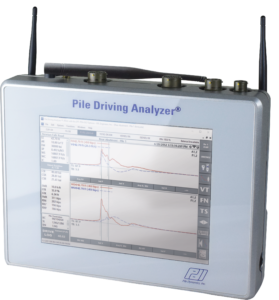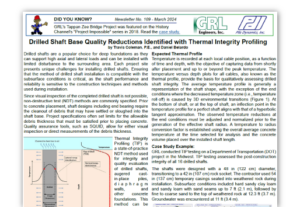Is there a relation between concrete strength and wave speed? How can I determine the minimum acceptable wave speed?
Based on information reported in American Concrete Institute (ACI) 228.1 and some other codes and specifications, the concrete compressive strength is approximately proportional to the compression wave velocity to the 4th power. This means that, if σ is the concrete strength, W is the wave speed, and k1 and k2 are constants: σ = k1 × W4 or W = k2× σ1/4 Those relationships can be used to compare the strength and wave speed of concretes with a similar mix. The following table might offer a rough guide:
| fc | wave speed | fc | wave speed |
| psi | ft/sec | MPa | m/sec |
| 2000 | 9,249 | 13.8 | 2,819 |
| 3000 | 10,235 | 20.7 | 3,120 |
| 4000 | 10,999 | 27.6 | 3,352 |
| 5000 | 11,630 | 34.5 | 3,545 |
| 6000 | 12,172 | 41.4 | 3,710 |
| 7000 | 12,650 | 48.3 | 3,856 |
| 8000 | 13,080 | 55.2 | 3,986 |
| 9000 | 13,470 | 62.1 | 4,106 |
| 10000 | 13,830 | 69.0 | 4,215 |
Suppose the minimum acceptable strength for the concrete of a drilled shaft project is σA. Also suppose that on a given shaft on that project you determine a wave speed WM (by performing a Pile Integrity Test or by Cross Hole Sonic Logging) and measure a strength σM (by extracting a cylinder, for example). A relationship may be established for the minimum acceptable wave speed on other drilled shafts on the same project, WA, as follows: WA = WM (σA / σM)1/4




